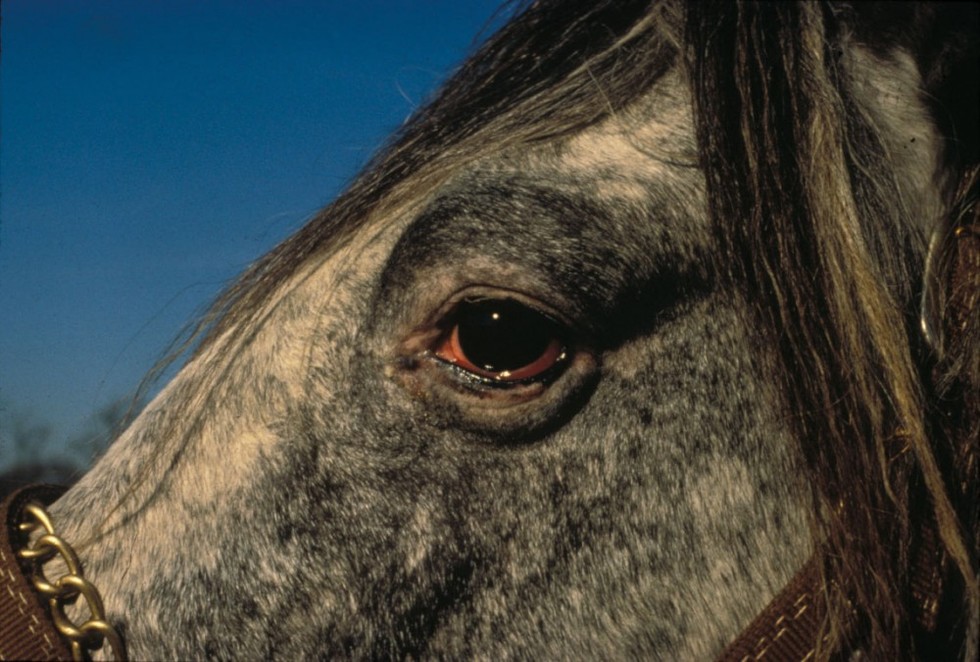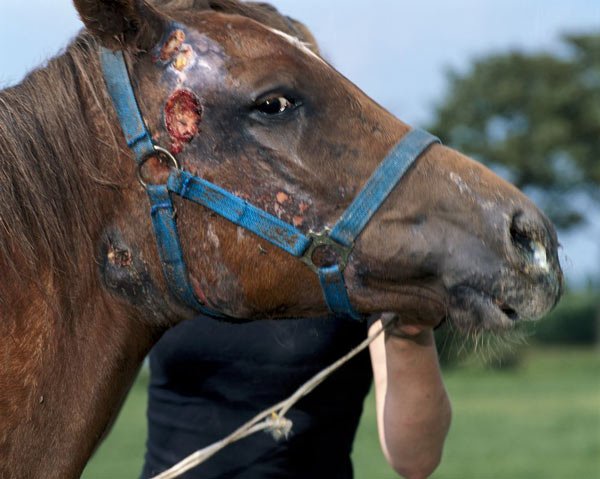Horses can suffer from bacterial skin infections when the skin loses its resistance, for example, because the horse has injured itself. Normally, the skin has good resistance to bacterial infection. But the bacteria do have a chance if the skin is affected. In this article, I will focus on some common batches in horses.
Dermatophilosis

A common bacterial infection is dermatophilosis, better known as rain scab. This infection is caused by a bacteria called Dermatophilus congolensis. This bacteria is present in the vicinity of horses. Horses can be ‘carriers’ of this bacteria without becoming ill. But when a horse has wounds, the bacteria can penetrate into the skin and into the hair follicles.
Reading Suggestions: 500 Horse Names For Male and Female Horse Names
The bacteria are also more likely if the natural wax layer on a horse’s skin has been affected, for example, if the skin and coat have been moist for a long time. Horses that run outside can therefore be more susceptible to this. This bacterial infection can sometimes resemble a fungal infection. Because it starts just like a fungal infection with bumps and raised hairs.
At a later stage, crusts and flakes develop on the skin. When you take it off, a light red spot remains. To confirm the diagnosis of this bacterial infection, it is necessary to make a bacterial culture. The dander and crusts are used for this culture. This infection can be treated by washing the horse every other day with betadine shampoo. Make sure the horse is well dried after washing. The stable must also be kept as clean and dry as possible. In case of a serious infection, the vet may also prescribe a one-week course of antibiotics.

Folliculitis and furunculosis
Another example of a common bacterial infection is folliculitis. This is an inflammation of the hair follicle. If the bacteria that cause this, in addition to the hair root follicles, also affects the skin and subcutaneous tissue, we call this furunculosis. This inflammation often occurs in the spring and summer and especially in the places where the horse wears the harness.

The infection can be recognized by small pimples that can open and release yellow-red fluid. The horse loses hair in these places and crusts can develop. In this case, the skin should be left alone as much as possible and the horse should not wear any harness. If the infection is severe, the horse can be washed with betadine shampoo and antibiotic treatment can be given.
Reading Suggestions: 6 Most Common Horse Diseases
Abscess and bacterial infection
An abscess occurs when there is inflammation in which tissue breaks and infection with bacteria occurs. The body then makes a capsule of connective tissue around it. In an abscess, white blood cells of the immune system compete with the bacteria. Within the abscess are bacteria and pus. This pus consists of dead bacteria, dead tissue, and dead white blood cells.

In the beginning, the abscess is still very stiff and the skin is tense and red and it feels warm. An abscess is usually painful for the horse. Over time, the abscess will soften. Eventually, the abscess will open and the pus can come out. This process is automatic, but it can be speeded up by keeping warm compresses on the abscess or by applying a drawing ointment.
It is possible to perform a puncture with a sterile needle. One can do a bacteriological examination of the pus that flows out in order to determine which bacteria one is dealing with. A well-known disease in horses is strangled. Abscess formation also plays a role here and takes place between the jaw branches.
These were a few examples of bacterial infections in horses, but there are other bacterial infections and it is always wise to consult a veterinarian if you have skin problems with your horse.









